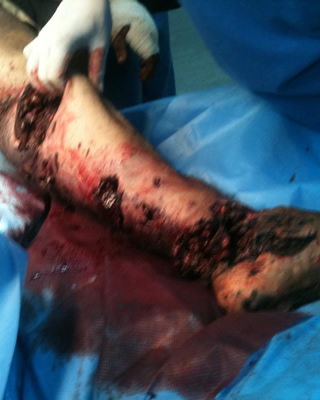Control of Catastrophic Haemorrhage
Exsanguination accounts for over 50% of deaths from trauma. Massive haemorrhage can kill even before airway compromise.
Question: What are the sources of significant bleeding in trauma?

Exsanguination accounts for over 50% of deaths from trauma. Massive haemorrhage can kill even before airway compromise.
Question: What are the sources of significant bleeding in trauma?
Answer: 'Blood on the floor and four more': external bleeding, chest, abdomen, pelvis and long bones.
Question: How would you control massive external haemorrhage?

Exsanguination accounts for over 50% of deaths from trauma. Massive haemorrhage can kill even before airway compromise.
Question: What are the sources of significant bleeding in trauma?
Answer: 'Blood on the floor and four more': external bleeding, chest, abdomen, pelvis and long bones.
Question: How would you control massive external haemorrhage?
Answer: You would use the DDIT method:
- D - Direct Pressure: apply firm direct pressure at the site of bleeding using a sterile dressing and hold it in place. Elevate the limb if possible.
- D - more Direct Pressure: If bleeding continues and soaks through the dressing then apply another dressing directly over the first.
- I - Indirect Pressure: Apply pressure to the artery proximal to the bleeding point, e.g. femoral artery at the groin, brachial artery along the humerus.
- T - Tourniquet: Apply above the site of haemorrhage and tighten until bleeding stops. Tourniquets can be improvised using the windlass Technique but they are less effective than purpose made ones, e.g. Combat Application Tourniquet
